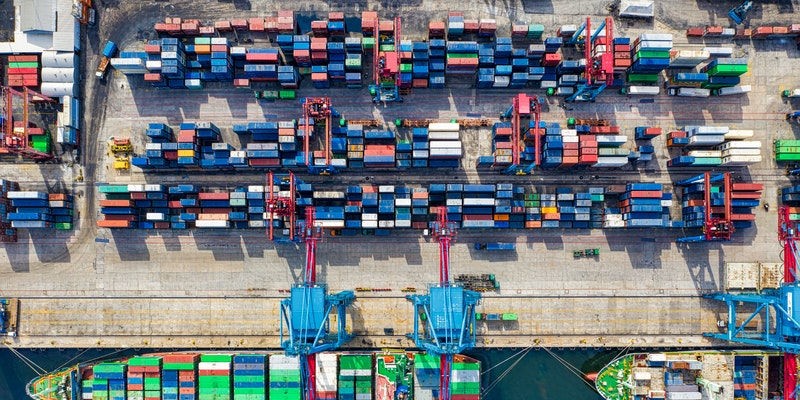The pandemic has caused more changes to our lives than we never could have imagined at the beginning of it. In addition to adults working remotely and students learning virtually, our everyday lives were disrupted. Although we gave little thought to other ways the world was changing due to the pandemic, things have certainly changed. Please continue reading to discover how the supply chain industry has suffered and some solutions to their current problems.

When we go to grocery stores, department stores, or even websites to order products, we are used to seeing shelves lined with the merchandise. Little consideration is given to when or how the products get from the manufacturers to the store shelves. Consumer concern is that they are available when needed.
The supply chain involves moving products from warehouses or industrial plants to store shelves. Unfortunately, the pandemic has created problems with that as well. A breakdown of the supply chain has made seeing empty shelves in stores increasingly noticeable.
Some supply chain problems and strategies include:
1. Increased Cost for Shipping
As we have seen in our personal lives, shipping for everything has increased. That includes the US Postal Service as well as other logistic services. It makes sense that shipping freight would increase in cost as well. This increased cost also involves products made in other parts of the world and shipped.
One way to solve this problem is to work with a freight forwarder. Many are smaller companies looking to build a name for themselves. They may offer discounts for contract work.
A freight forwarder will help reduce the cost because they will deliver your product directly to the shipping station for delivery from there. These companies don’t have to charge you as much because they are saving money – making the business more efficient with their different tracking methods.
2. Scarcity of Products
Many companies have complained during the pandemic that the supplies and products they need to produce are not available. That includes restaurants not getting certain food items or even plastic serving utensils. They are sourcing from odd places. The scarcity of products and materials has made it necessary for some businesses to close their doors during the pandemic.
One strategy to avoid scarcity is to order from a smaller supplier a few times a year. Even if these are products that you put on the shelf for hard times, keeping a supplier on hand for hard times is essential, that means the supplier is not your primary supplier of products for your business, but when you can rely on when products are scarce because you know they will come through for you.
3. No Forecasting System
If you have been operating a business and do not have a forecasting system in place, you have been doing business in a way that makes it harder for you. Knowing what you need makes it possible for you to start ordering supplies before they are required. In addition, some items get lost in the noise. One solution is to use GPS Tracking to help keep track of property.
One solution to this problem is to use technology to your advantage. Being able to forecast what will be needed and when to the success of your business. During this time of supply chain problems due to an unprecedented pandemic, knowing what is coming next and what customers will want shortly is vital.
4. Issues at Ports
Many consumers do not realize that merchandise and products come into the United States and land at ports. It is picked up by a logistics company and transported to where it needs to go from the ports. Among the problems with ports during the pandemic has been congestion. Ships were suitable, but there was no one to unload them. That meant that merchandise stays put for extended periods.
One solution to the port congestion problem is installing lights and having crews work 24 hours a day, seven days a week. Not only will that solve the problem of congestion, but it will also allow hundreds of employees to make money.
5. Changing Customers
Customer attitudes affect business significantly, and there was no difference during the pandemic. Customers either expect to have it all or understand when fulfillment services cannot be met. In essence, they can make or break a business.
Some ways to do this is also to use the Internet. Savvy businesses look at customer reviews and what customers say about their business. They take heed and respond to the criticism as needed.
As you have read, the pandemic had caused large supply chain issues. However, many of those can be overcome with savvy strategy and solutions. Companies looking to keep up with supply and demand need to think and plan ahead.
